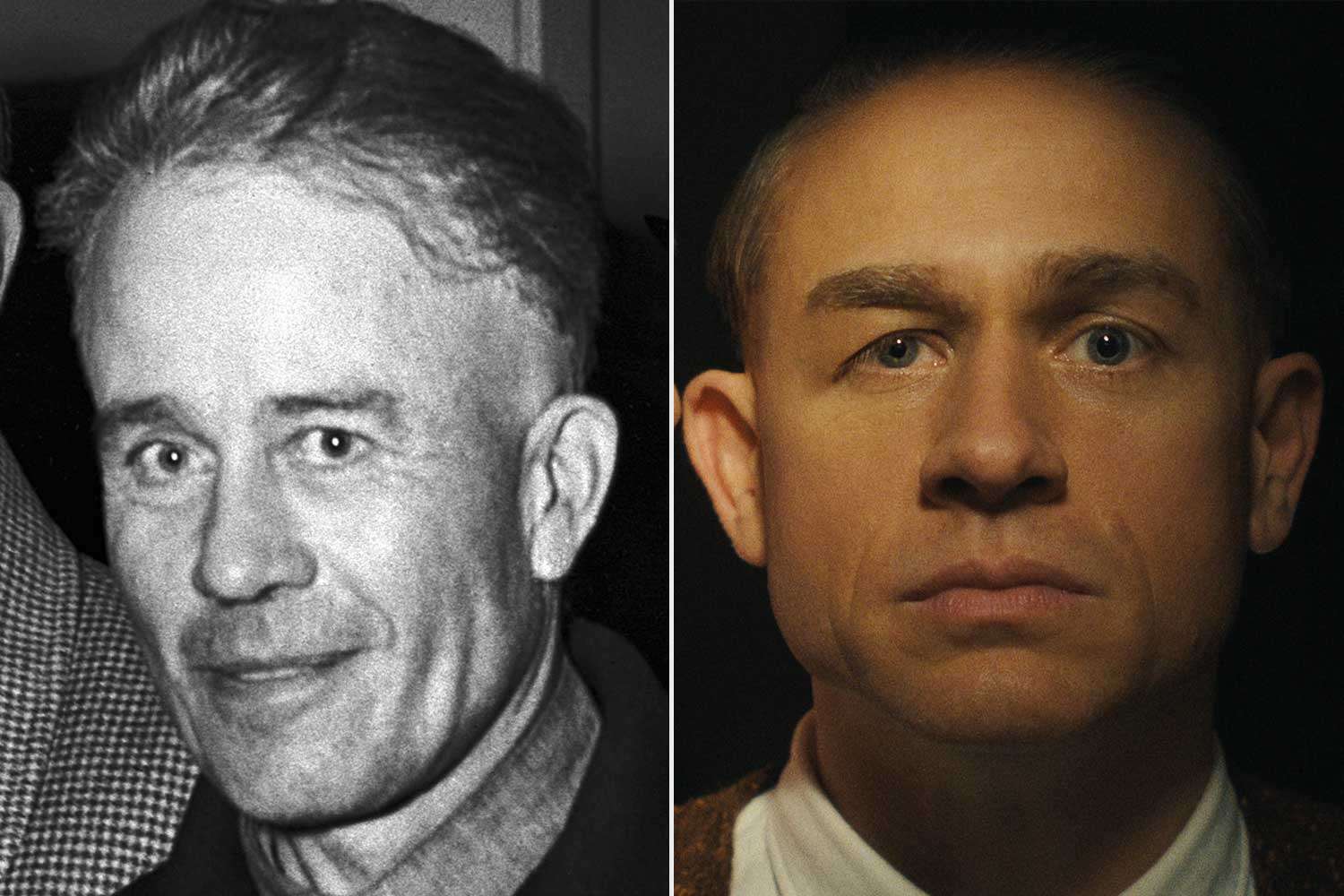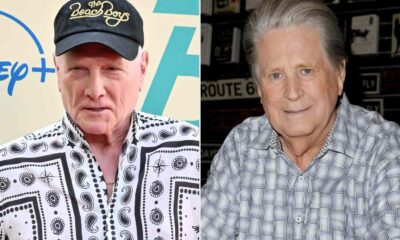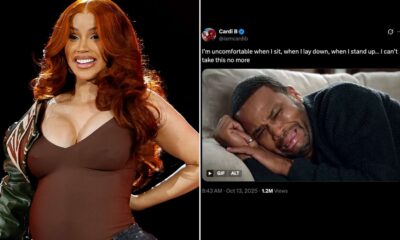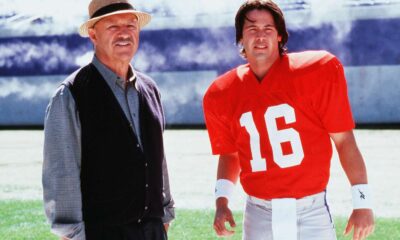Entertainment
7 Details in Monster: The Ed Gein Story That Didn’t Actually Happen in Real Life

NEED TO KNOW
- Monster: The Ed Gein Story tells the chilling story of real-life murderer Ed Gein
- Ryan Murphy co-created the show to share Gein’s impact on films and other criminals
- While several of the details were accurate, Murphy tweaked or exaggerated some information for dramatic purposes
The story of killer Ed Gein has been portrayed in Ryan Murphy’s latest Monster anthology series installment, Monster: The Ed Gein Story.
In the show, Charlie Hunnam plays the real-life killer whose crimes inspired several famous films, like Psycho, The Texas Chain Saw Massacre and The Silence of the Lambs.
For most of his life, Gein appeared to be a small-town farmer, but that all changed in 1957 when he was arrested for the murder of local hardware store owner Bernice Worden. Gein also admitted to murdering Mary Hogan in 1954. Afterwards, police searched his house and found a slew of disturbing items made of human remains that he obtained while robbing graves.
Gein eventually confessed to killing the two women and creating several furniture and clothing items from human remains. After pleading not guilty, he was found not guilty by reason of insanity and was institutionalized until his death in 1984.
“He is probably one of the most influential people of the 20th century, and yet people don’t know that much about him,” Murphy told Tudum of why he was drawn to tell Gein’s story.
Although the show tells the real-life story of Ed Gein, the creators exaggerated certain pieces of his story for dramatic purposes. Here are some of the details that were fabricated in Monster: The Ed Gein Story.
Adeline was not his accomplice
In Murphy’s adaptation, he depicted Adeline Watkins (played by Suzanna Son) as Gein’s accomplice and longtime girlfriend. However, in reality, it’s not clear how much of a relationship the two had.
Shortly after Gein was arrested, Watkins told the Minneapolis Tribune that they had a 20-year relationship and claimed that he proposed to her in February 1955, but she “turned him down.”
Watkins further described Gein as “good and kind and sweet” and that he “was so nice about doing things I wanted to do that sometimes I felt I was taking advantage of him.”
However, after the story started making waves, Watkins retracted her statement and told the editor of the Plainfield Sun that she knew him as a “quiet and polite” friend — but nothing more.
“There was no 20-year romance,” she said at the time, while further denying that she ever called him “sweet.”
Gein did not have a relationship with Bernice Worden
In Monster, Murphy suggests that Gein was romantically involved with his second murder victim, local hardware store owner Worden. The show portrayed her death as one of passion when he shoots her in her store.
However, there is no evidence that Gein and Worden had any sort of relationship. Although he did admit to murdering her in her store, Gein insisted that he had never had a sexual experience because of his mother raising him in a strict religious household.
Gein’s involvement in Henry’s death and Evelyn’s kidnapping was never proven
In order for Murphy to fully convey the terror of Gein, he embellished two stories and pinned their deaths on the serial killer.
In the first episode of Monster, Gein kills his older brother, Henry (played by Hudson Oz), after Henry tells him that he plans on marrying his twice-divorced girlfriend and leaving their mother’s house. Gein subsequently hits him with a piece of wood and stages a fire to burn his body.
However, in real life, there is no proof that Gein killed his older brother. He later claimed that he and his brother were fighting a brush fire when Henry died in 1944, according to Harold Schechter’s 2005 book Deviant: The Shocking True Story of the Original ‘Psycho’. According to Schechter, police ruled out foul play and reported that Henry died of asphyxiation that led to heart failure.
Another case that Murphy fabricated was the disappearance of Evelyn Hartley (played by Addison Rae). In the show, Hartley is a 15-year-old girl from a nearby town whom Gein becomes obsessed with, abducts and later kills.
While Hartley was a real girl who went missing, she disappeared around two hours away from Gein in the town of La Crosse, Wis., in October 1953, according to the Winona Daily News. The abduction case went cold, but after Gein was arrested for the murders of Worden and Hogan, he became a primary suspect.
However, authorities didn’t find any evidence linking the two, and he passed a lie detector test after maintaining his innocence in the case, per The Victoria Advocate.
There is no evidence that Gein engaged in necrophilia
After Gein was arrested in 1957, police discovered several pieces of clothing, masks, furniture and other keepsakes made out of human remains in his home. The list of disturbing items included a “woman suit” and sex organs.
Due to the nature of his crimes, there was speculation that he practiced necrophilia and cannibalism. The Monster portrayal of Gein supports those theories by showing him engaging in necrophilia with one corpse.
Despite the heinous acts he committed, Gein vehemently denied participating in cannibalism or necrophilia. According to Schechter, Gein allegedly found the smell of the deceased bodies “offensive.”
He did not correspond with other serial killers, like Richard Speck
Among the many themes that Murphy explored in Monster was how Gein influenced other serial killers. To illuminate this idea in the series, mass murderer Richard Speck is shown writing fan letters to Gein.
In the final episode, Speck describes Gein as his “idol” and says that the murderer is “who I wanted to be, and he’s who I became.”
However, in reality, there is no evidence that Gein and Speck ever communicated. Speck, who was convicted of murdering eight female nursing students in Chicago in 1966, actually distanced himself from other criminals and didn’t liken himself to other killers.
When asked about his crimes, Speck told the Chicago Tribune in 1978, “Me, I’m not like [John] Dillinger or anybody else. I’m freakish.”
Gein was not labeled as gynephilic
In Monster, another aspect Murphy unpacks is Gein’s sexuality and his feelings about gender. The show features a moment when Gein learns about Christine Jorgensen, a famous transgender woman who was an activist in the 1950s, and becomes infatuated with her story.
Later on in the show, Gein imagines talking with Jorgensen and admits that he thinks he is “transsexual.” However, Jorgensen tells him that he’s not transgender, but instead gynephilic, a term referring to intense attraction to the female image or femininity.
In reality, it’s unknown whether or not Gein ever actually identified as gynephilic. The show’s creators later explained to Tudum that they added the clarification to not conflate Gein’s crimes with transgender identity.
“It was really important for us to make that distinction, for us to say, ‘Look, these are two very different things,’ ” co-creator Ian Brennan explained. “And it was cool to be able to put it in the mouth of Christine Jorgensen. For him to be told that through her in his mind was a really cool moment.”
Gein did not help catch Ted Bundy
Another murderer whom Murphy incorporated in Monster was the infamous serial killer Ted Bundy. In the final episode, two detectives visit Gein in prison and interview him about who he thinks could be killing young women in the late 1970s. In the show, Gein ultimately helped them in capturing Bundy.
While detectives did visit Gein to pick his brain in real life, he was reportedly no help in solving the case. Former FBI profiler John Douglas later recalled the incident to the Schokkend Nieuws.
“I had the opportunity to briefly meet him, but Gein was so psychotic that it really wasn’t much of an interview,” he said, per an archive obtained by the Flashback Files. “Not like the ones I did after with other serial killers. It was really weird: he was working in the leather shop at the prison, this Mendota State Mental Institution.”
Read the full article here

-

 TV5 days ago
TV5 days agoHow to watch 2025 Victoria’s Secret Fashion Show live for free
-

 Music6 days ago
Music6 days agoKylie Jenner slammed for excessive autotune on ‘awful’ new song ‘Fourth Strike’
-

 Entertainment6 days ago
Entertainment6 days agoMike Love Cries During Emotional Tribute to Late Beach Boys Founder Brian Wilson: ‘He Will Always Be In Our Hearts’
-

 Celebrity7 days ago
Celebrity7 days agoJack Black steals the show at Naomi Watts’ Hollywood Walk of Fame star ceremony
-

 Entertainment6 days ago
Entertainment6 days agoAziz Ansari Reveals the One Parks and Recreation Line He and Adam Scott Couldn’t Get Through
-

 Entertainment7 days ago
Entertainment7 days agoCardi B Has a Hilarious NSFW Response for Why She Keeps Getting Pregnant
-

 Entertainment6 days ago
Entertainment6 days agoRobert Irwin breaks down in tears during ‘DWTS’ routine dedicated to mom Terri, late dad Steve
-

 TV6 days ago
TV6 days agoKris Jenner gave loved ones ‘secret password’ for consultation with plastic surgeon















